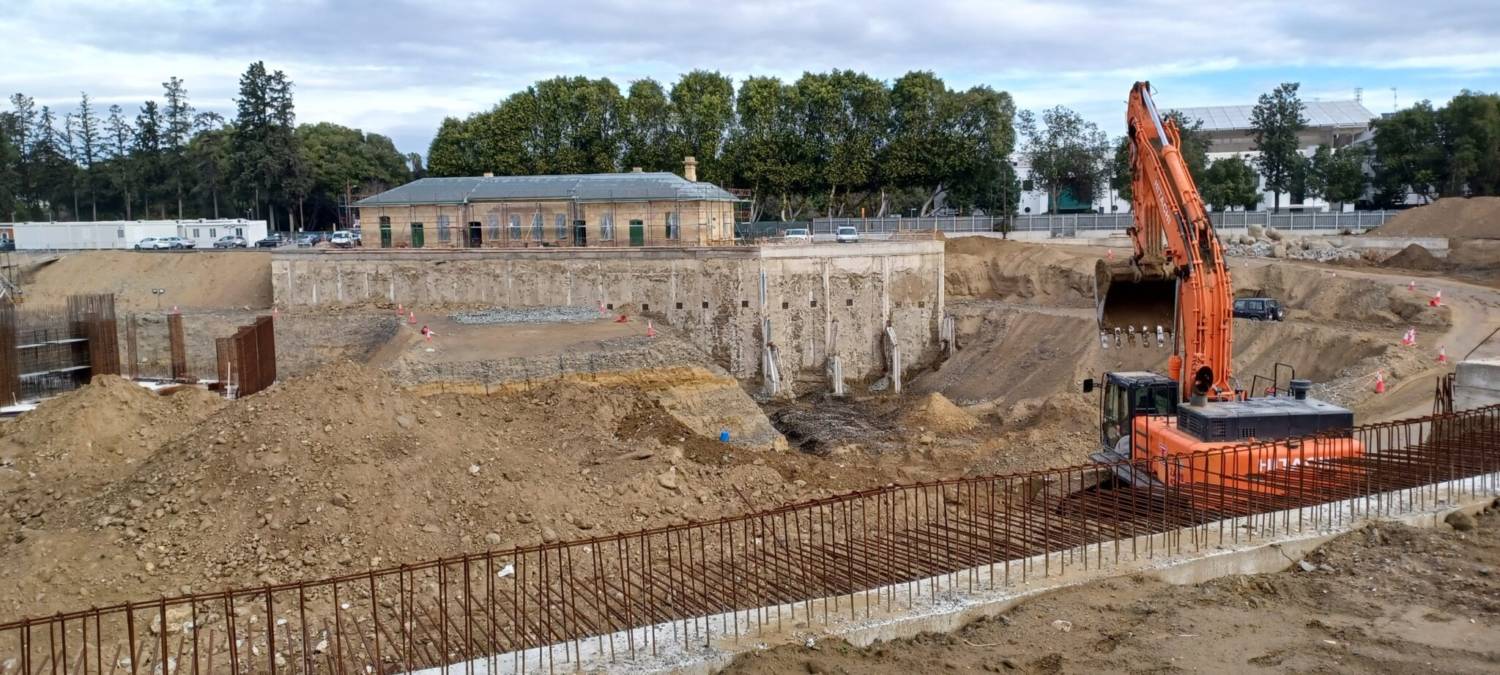The Department of Public Works and the construction contractor of the new Archaeological Museum, opposite the House of Representatives, were surprised when columns were found at a depth of about nine meters, dating back to the British colonial era.
The surprise lies in the fact that, decades later, the columns were discovered not beneath the old General Hospital, which was demolished as part of the Museum’s construction, but beneath the asphalt-paved parking area, where no one had in mind or remembered that there were building installations.
Part of the underground parking area, will be used for the construction of warehouses, laboratories, and educational spaces of the Museum.
Although the parking spaces will be below ground level, they will be open and visible from the ground level, essentially not being considered underground in the narrow sense of the word.
One of the main reasons for not creating underground covered spaces relates to the security of the Museum’s valuable exhibits.
In the first basement, a café will be formed, which will have open spaces and will operate during hours when the Museum is closed.
The project engineer, Ms. Eva Iordanou, when asked about it, referred to “unforeseen ground conditions,” specifically volumes of concrete, in the form of round columns.
If underground parking spaces had not been planned in the designs, the columns would have remained forever buried without being noticed.
However, the provision for underground parking spaces led to excavations to a depth of 14 meters. The depth was reduced due to the foundation thickness of approximately 1.5-2 meters.
The unexpected development has led to delays, with the contractor seeking an extension of approximately two and a half months. The Department of Public Works considers that despite the delay observed in the initial stages, the work is progressing at a satisfactory pace without significant deviation from the project construction schedule.
At the same time, Ms. Iordanou, responding to a question from Phileleftheros, mentioned that the construction works are monitored not only in terms of schedules but also in terms of quality, expressing the Department’s satisfaction with the results so far.
It was estimated that the construction works of the project would be completed within 42 months, and the contract includes a two-year maintenance period, with negotiations also provided for a 10-year maintenance period.
The project was scheduled to be delivered on July 9th, but due to the delays that have arisen, the delivery will be extended.
The contract also includes restoration/maintenance works of a listed building and the demolition of other buildings.
The completion of the works will be followed by 18 months of work on museographic works, including the transfer and installation of exhibits, while the delivery of the Museum will take place in 60 months, specifically in 2028.
The Museum, with a total area of 30,000 square meters (including underground areas), will be erected on a plot of 40,000 square meters.
It will include permanent exhibition spaces of 5,500 square meters, which will accommodate around 6,500 antiquities, spaces for temporary exhibitions of 1,000 square meters, educational program spaces, maintenance laboratories of 2,000 square meters, underground parking spaces, antiquities storage of 5,000 square meters, a restaurant, café, library, amphitheater, offices, a gift shop/art shop, and extensive landscaping of the exterior spaces.
The landscaping works will include a public square with a fountain, which will mark and upgrade the new, improved image of the urban center.






